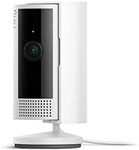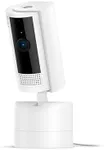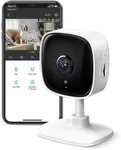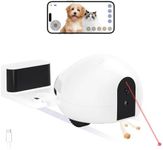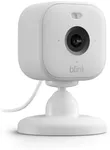Buying Guide for the Best Indoor Wireless Cameras
Choosing the right indoor wireless camera can significantly enhance the security and monitoring of your home or office. When selecting a camera, it's important to consider various specifications that will determine how well the camera meets your needs. Understanding these key specs will help you make an informed decision and ensure you get the best fit for your specific requirements.ResolutionResolution refers to the clarity and detail of the video captured by the camera. Higher resolution means clearer and more detailed images. Common resolutions include 720p (HD), 1080p (Full HD), and 4K (Ultra HD). If you need to identify faces or read small details, a higher resolution like 1080p or 4K is preferable. For general monitoring, 720p may suffice.
Field of ViewField of view (FOV) is the extent of the observable area the camera can capture. It is measured in degrees. A wider FOV means the camera can cover more area, which is useful for monitoring large rooms or open spaces. Typical FOV ranges from 90 to 180 degrees. Choose a camera with a wider FOV if you need to cover a larger area with fewer cameras.
Night VisionNight vision allows the camera to capture clear video in low-light or dark conditions. This is crucial for 24/7 monitoring. Cameras with infrared (IR) LEDs can provide night vision. The effectiveness of night vision is often measured by the range it can cover, typically from 15 to 50 feet. Consider your lighting conditions and choose a camera with adequate night vision range for your needs.
Two-Way AudioTwo-way audio enables you to listen and speak through the camera using a built-in microphone and speaker. This feature is useful for communicating with family members, pets, or even intruders. If you need to interact with people or pets remotely, look for a camera with reliable two-way audio functionality.
Motion DetectionMotion detection allows the camera to detect movement and trigger alerts or recordings. This feature helps in monitoring activity and can save storage space by recording only when motion is detected. Some cameras offer adjustable sensitivity and customizable activity zones. Choose a camera with advanced motion detection if you need precise monitoring and fewer false alerts.
Storage OptionsStorage options refer to how the camera saves recorded footage. Common options include local storage (SD cards) and cloud storage. Local storage is often more secure and doesn't require a subscription, but it can be limited in capacity. Cloud storage offers more space and remote access but may come with a subscription fee. Consider your storage needs and whether you prefer local or cloud storage.
ConnectivityConnectivity refers to how the camera connects to your network and devices. Most indoor wireless cameras use Wi-Fi, but some may also offer Bluetooth or Ethernet connections. Ensure the camera supports your network type and has a stable connection. If you have a large home or multiple devices, look for a camera with dual-band Wi-Fi (2.4GHz and 5GHz) for better performance.
Smart Home IntegrationSmart home integration allows the camera to work with other smart devices and platforms, such as Amazon Alexa, Google Assistant, or Apple HomeKit. This feature enables you to control the camera using voice commands and integrate it into your smart home ecosystem. If you already use smart home devices, choose a camera that is compatible with your existing setup.
Power SourcePower source refers to how the camera is powered. Options include wired (plug-in) and battery-powered cameras. Wired cameras offer continuous power but require a nearby outlet, while battery-powered cameras offer more flexibility in placement but need regular recharging or battery replacement. Consider your installation preferences and choose a power source that suits your needs.
